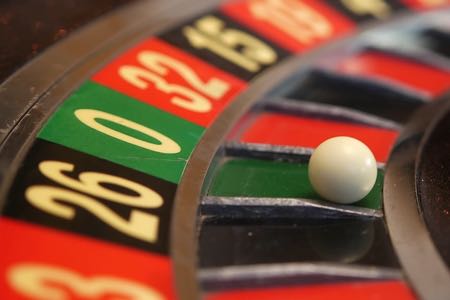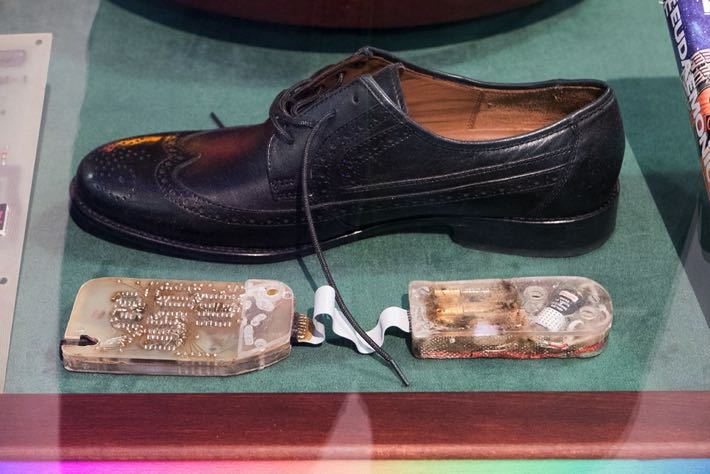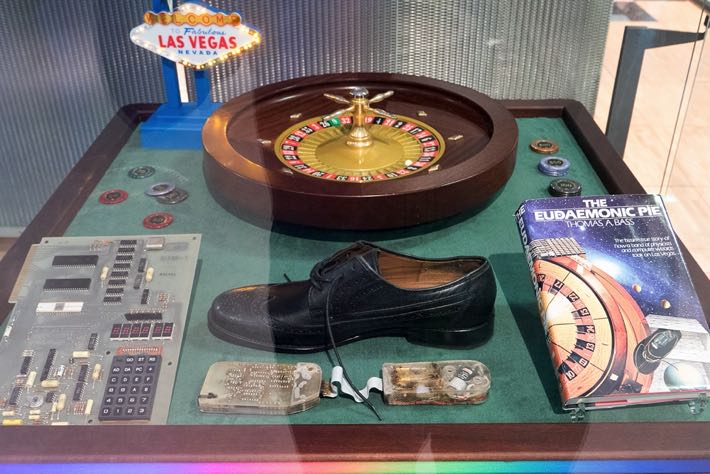 The House Always Wins is one of the key tenets of the gambling industry. It is why casinos are often lavish affairs and why Las Vegas is full of places that seem to spend huge amounts of money offering forms of entertainment simply for the purposes of getting people to go there so that their money can be taken from them. It is also why so many people try to invent ways of decreasing the house’s Edge wherever possible, often coming up with wild, crazy and harebrained schemes to win themselves some money.
The House Always Wins is one of the key tenets of the gambling industry. It is why casinos are often lavish affairs and why Las Vegas is full of places that seem to spend huge amounts of money offering forms of entertainment simply for the purposes of getting people to go there so that their money can be taken from them. It is also why so many people try to invent ways of decreasing the house’s Edge wherever possible, often coming up with wild, crazy and harebrained schemes to win themselves some money.
In the case of J. Doyne Farmer, that harebrained scheme was even crazier than most. Working with a friend, he devised a way to put a primitive computer into his shoe, which was designed to take advantage of the amount of time between the moment that the croupier let go of the ball and the point at which bets were no longer allowed. It was in the 1970s, but what he came up with is the sort of thing that bettors today would love to get their hands – or feet – on. The question is, what was it and did it actually work?
J. Doyne Farmer

Born on the 22nd of June in 1952 in Houston, Texas, J. Doyne Farmer actually grew up in New Mexico. He was inspired by a local Boy Scout leader and physicist named Tom Ingerson, who help to get Farmer interested in both science and adventure. Some of the activities that he was involved in during his formative years included searching for an abandoned gold mine in order to find money to fund a mission to Mars, as well a road trip out to the Northwest Territories and camping in the Barranca de Cobre.
In other words, then, Farmer was taught early on that there was excitement to be found in the world. He went to Stanford University and studied Physics, then studied physical cosmology at the University of California, under George Blumenthal, after his graduation. It was whilst in graduate school that he worked with his childhood friend, Norman Packard, to form a group that they called Eudaemonic Enterprises. A book, called ‘The Eudaemonic Pie’, was published about their exploits, with the roulette shoes being the most famous.
Taking on the Roulette Wheel
The goal of Eudaemonic Enterprises was to open a science commune, with the word ‘eudaemonia’ having been used by Aristotle as a reference to a state of enlightenment that is derived from a life lived in accordance with reason. In order to open the commune, they needed money. One way that they saw of being able to get some money was to take on the casinos, using their knowledge of science and physics to get one over on the House. The first thing that they did was buy a roulette wheel, which allowed them to carry out extensive amounts of experiments.
The pair looked at both the experimental and theoretical physics of a roulette wheel, learning as much as they could about how it worked. In order to complete their task, they needed to create a digital computer that was wearable, creating their device at roughly the same time that Apple was releasing the company’s first digital desktop computer. The computer had just three-kilobytes of memory, which Farmer hand-coded in machine language, teaching it what it needed to do depending on the input that it was given.
The program that Farmer input into the device included what was known as a ‘floating-point package’, as well as a sequencer that would perform the calculations and an operating system that used both toe inputs and vibrating outputs. During the early stages of development, the ‘computer’ was hidden under the armpit but then moved to the inside of a specially built-up shoe. Despite the relative simplicity of the design, the workings of it were complex, as you can imagine for something that was going to allow the user to beat the casino.
One of the pair pressed a switch in their shoe to measure the position and the velocity of the ball once it had been released by the croupier and begun its journey spinning around the roulette wheel. The computer then used the information that had been put into it in order to calculate the likely landing position of the ball. A signal was then sent on to the second person, who would place the bet that was indicated by the working out of the computer. Though it wasn’t a fool-proof system, it did give them the Edge they were after.
Farmer and Packard took their device to the likes of Reno, Tahoe and Las Vegas, giving themselves a 20% advantage over the House whenever the shoe-based computer worked. Unfortunately, it was hit with numerous hardware problems that mean that it was inconsistent in its output. At the same time, the two were concerned about the casinos treating them violently if they discovered what they were up to, which was much more common in the 1970s. As a result, they limited their stakes and failed to win the money they felt they needed to start their commune.
A Rough Sense of How the Machine Worked

Knowing that someone used their toe to input information is one thing, but knowing what that information was and how it worked is something else entirely. The switch on the toe was pressed down each time that the ball made a complete spin, whilst another switch was pressed each time the wheel spun. This data allowed the small computer to calculate the odds of various outcomes, which were communicated via a tap on the leg in order to indicate where the bet should be placed. All of that took place in a short space of time.
As anyone who has ever played roulette will know, the croupier starts spinning the ball before the call of ‘No more bets’ is made. There is a window of time that exists there in which such computations could be made. The data that the computer worked from had been gained using the roulette wheel that the pair had bought and worked on at their leisure. That allowed for the calibration of the device before heading to the casinos proper and placing real-life bets according to what the computer told them to do.
How the Maths Worked

The key thing about the shoe-computer wasn’t that it allowed the pair to know exactly where the ball was going to land, but rather that they could discover where it wasn’t going to land. By being able to exclude roughly half of the roulette table, Farmer and Packard were able to increase their Edge by a significant amount. The computation offered by the shoe-computer increase the odds from 98:100 to 196:100, shifting them well into the favour of the pair thanks to their knowledge of physics.
The difference meant that they would win on average rather than lose on average. This increase meant that they were able to give themselves a much better chance of taking home some money, with the pair later saying that it was an advantage of about 20% on average. Imagine any game in the casino and give yourself a 20% advantage over the House and there is a very real chance that you’re going to end up walking out with more money than you went in with; provided you place your bets correctly, of course.
Not Just an Urban Legend
As you might well imagine given the slight ridiculousness of the idea of putting a computer in a shoe, there were many that felt as though it was all just an urban legend that was shared amongst the science community. Nowadays, of course, there are always people who believe in conspiracies, proving themselves to be absolute whack jobs rather than former Southampton footballers or members of a band that thought they were too sexy. Even so, the shoe and computer can be viewed in a museum in Germany, in case you’re not a believer.
On top of that, a pair of researchers worked together in order to show how the process works. Michael Small, from the University of Western Australia, teamed up with Chi Kong Tse from Hong Kong Polytechnic University in order to decide for themselves how the device will have worked. They were able to show that simply knowing the rate at which the wheel and the ball were spinning is more than enough information to start to skew the odds. Obviously things get random when the ball starts bouncing, but it’s enough information to shift the odds slightly.
The pair used a system similar to the one that Farmer had developed in order to show that they could win 18% of the time, on average. They recorded each time the ball or wheel passed a certain point, increasing their chances significantly from the -2.7% that is normally expected from such a random wager. Small said at the time, “Knowing the initial conditions allows you to beat the odds. In some cases you can beat them quite significantly.” It was the publication of the paper that prompted Farmer to admit publicly that he’d created the device.
Farmer had always wanted to avoid encouraging people from taking on the casinos, presumably still afraid of the possible violence that he had long been scared of and worrying that it would be his fault if someone got injured. As a result, he kept his results to himself, but when the paper was published he was interested to compare findings. In both cases, a decision was taken to concentrate on what happened after the ball was released and before the ‘chaos’ started. Interestingly, the algorithms differed from one another in some ways.
Farmer had based his work on the air resistance that will have been in place to slow the ball down, whilst Small and Tse were able to use overhead cameras and other technology that didn’t exist in the 1970s to verify their algorithms. Small and Tse also noted that it would be easy enough for casinos to stop such systems being used, with the main method of doing so being stopping the placing of bets as soon as the ball has been released. At the very least, they felt, bets should be stopped soon after in order to reduce the time for such calculations to be made.
Life After Roulette
As you might imagine, Farmer’s life wasn’t all about taking on the casinos. In fact, the reality is that he was banned from a lot of casinos when he started being successful with his bets. They might not have known how he was doing it, but they knew that he was and that was enough for them to stop him from winning. The good news for Farmer was that being able to predict possible outcomes isn’t just useful in casinos. In the wake of his experiment, he went into the world of the stock market, creating The Prediction Company.
This eventually became an algorithm for trading on the market depending on certain signals that were sent from people buying and selling. As he grew older, he turned his mind towards education and wore several hats in that field. He was the Director of the Complexity Economics programme at the Institute for New Economic Thinking at the Oxford Martin School, as well as being the Baillie Gifford Professor in the Mathematical Institute at the University of Oxford. In America, he was an External Professor at the Santa Fe Institute.